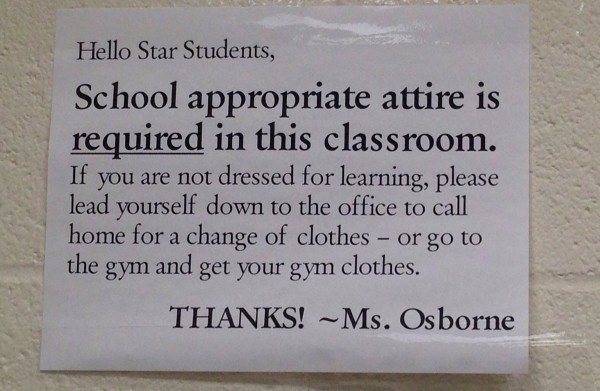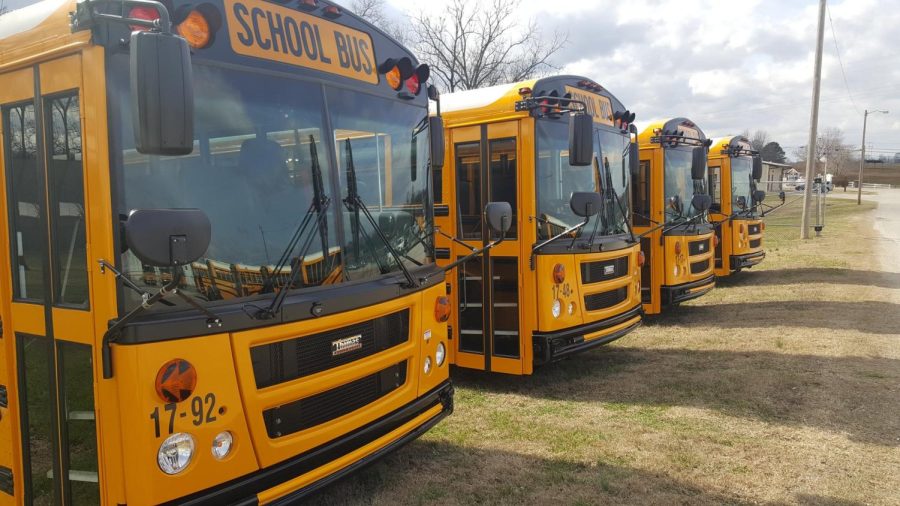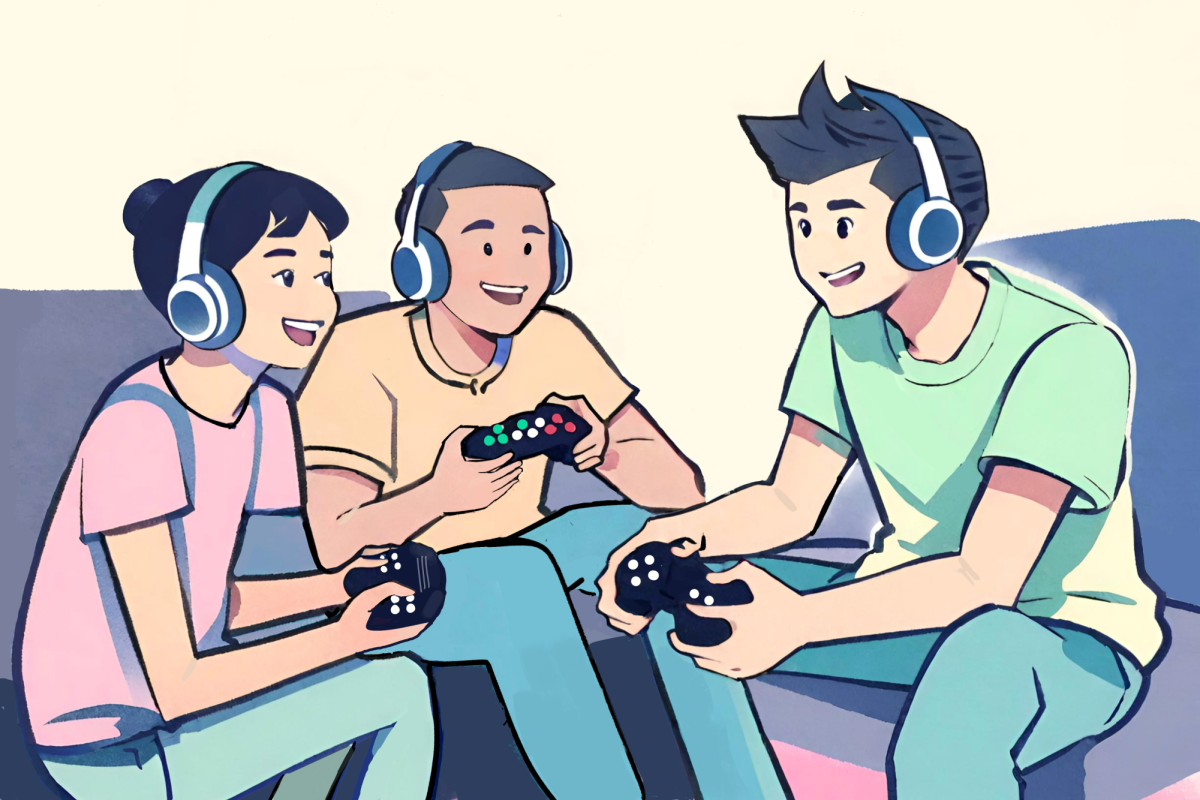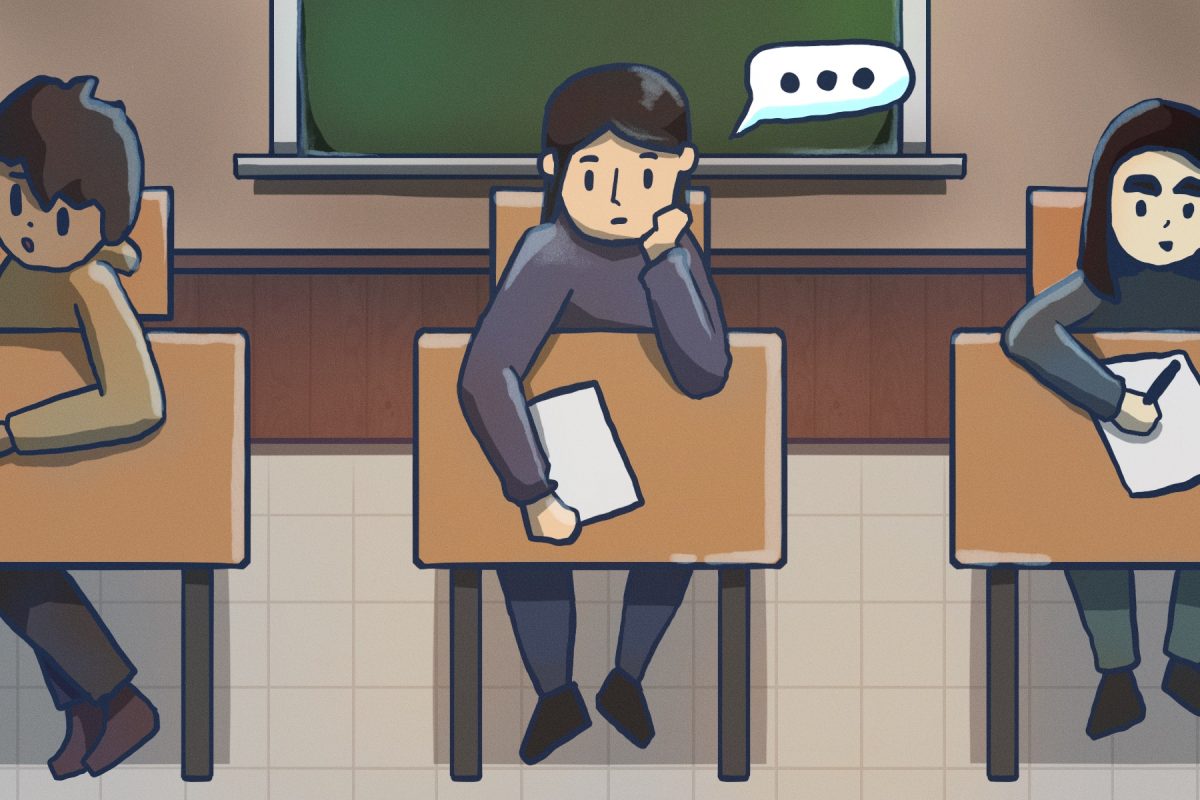Every year, as temperatures rise and the air conditioning system inevitably malfunctions, students and teachers anticipate the annual announcement that details the school dress code. Students are reminded that they are expected to dress “professionally” and avoid revealing summer clothing.
MCPS only requires schools to enforce the rule that prohibits clothing promoting drugs, alcohol, harassment or violence.
Individual high schools are still allowed to add additional rules to their specific dress codes, according to the MCPS Public Information Office. Most schools choose to enforce additional rules regarding the amount of skin shown, as well as hats and footwear, during the school day.

According to the school handbook, in order to provide an “optimum learning environment,” students are not allowed to wear see-through, low-cut or strapless tops, and clothing must be “adequate in both length and coverage.”
Though the dress code is devised by administration, enforcement of the dress code is left up to the staff. Administration generally intervenes only for repeat dress code violations, principal Alan Goodwin said. Responses to dress code violations range from giving the student a warning to calling parents and having the student change clothes.
While parts of the school dress code, such as banning clothing with inappropriate messages and making students wear shoes help foster a safe learning environment, policing female students’ wardrobes does not.
Goodwin admitted that the dress code is mostly centered around assuring that girls’ clothing is “appropriate and professional,” without much focus on male students.
This is problematic for several reasons. As Huffington Post blogger Soraya Chemaly writes in her op-ed “Dress Codes or How Schools Skirt Around Sexism and Homophobia,” rules that focus mostly on female students to mitigate distractions in the learning environment hold girls responsible for boys’ inappropriate behavior, and imply that male students are unable to control themselves.
Furthermore, the way the school dress code is enforced at Whitman is largely inconsistent and ineffective. The degree to which teachers enforce these roles ranges from nonexistent enforcement to asking girls dressed inappropriately in 8th period how they managed to get through the school day naked.
This varied enforcement only contributes to the esoteric nature of what is and isn’t appropriate for females’ sexuality. Girls today receive many mixed messages. Popular culture encourages girls to fully utilize their sexuality and stores sell mostly “provocative” clothing, yet girls receive backlash at school for wearing what society considers attractive and powerful.
Though the school dress code is trying to overcome this culture of objectification by encouraging modest dress, calling out girls wearing revealing clothing or forcing them to change into gym clothes does not combat societal objectification of teenage girls and only perpetrates the attitude that it’s ok for someone else, whether it be a teacher, peer or principal, to dictate what is sexually acceptable for girls.
Rather than enforcing ineffective rules that police female students, the school should hold a seminar where students learn about sexism and gender roles, similar to the Youth Summit.
All students could benefit from learning about portrayal of women in the media and the culture of female objectification. Starting an honest conversation about respect and feminism would certainly contribute to an “optimal learning environment” far more than eradicating crop tops and mini-skirts.



















Ixion • May 27, 2014 at 9:35 pm
I disagree.
First, it seems like there’s a serious case of intention/belief conflation going on. The belief of the administration may be flawed somehow (I’m not familiar enough with the critical pedagogy on dress codes to comment exhaustively), but the intention is to create a “professional” learning environment. That still stands, regardless of the “implications” that others may or may not infer. Scare-quotes because I agree, there are problems.
The larger issue with this polemic stems from a disregard for the actual performative process of dress-code-breaking.
Dress-code-breaking as polemic and performance (granted, this isn’t [consciously] the overwhelming majority of cases) serves a vital role in the construction of a non-“orthodox” identity as students choose to create some self for themselves that is in opposition to oppressive/unfair/wrong rules.
That’s important because it’s micropolitical acts like these that spill over into macropolitical change.
Rather than totalizing the issue and constraining it to “what is sexually acceptable for girls,” it might be more efficacious to encourage identity construction and conversation about much more than feminism narrowly construed as gender roles.
While identity politics might not be the best way to go about macropolitical change, it is at least a method (and one I cannot find a better alternative to at the moment).
Ixion • May 27, 2014 at 9:52 pm
And in somewhat of a contradiction, the prevailing social structures *will* judge whomever wears something they deem not okay.
Let the performance break down the structures, have the discourse and the dialogue.
But education is about empowerment.
Don’t sacrifice students’ chances for being accepted/normalized in our society (if that is a good thing) by engendering habits that it’s okay to wear what you want.
Because regardless of if it is or if it isn’t, society seems to have decided for us.
Johnny Football • May 28, 2014 at 6:30 pm
lol I didn’t understand any of that #GoBrowns
? • May 27, 2014 at 7:07 pm
THANK YOU
student • May 26, 2014 at 6:00 pm
I agree with all of this, but it’s hardly relevant to Whitman as dress code here is rarely enforced. You would have had more of a basis for your arguments if they were broadened to address the general high school dress codes across the country.